There is always a chance for germs to live where you have a lot of people living together. Cleaning of older adults’ nursing-home rooms thoroughly is very important because they can easily get sick. You can ensure the room is as clean and safe as possible when you focus on cleaning on often dirty areas and using the right products.
Stay away from the use of harsh chemicals or fragranced products, so you don’t curse more harm or irritation to the room’s resident.
Whether you are a property manager or housekeeping supervisor, you surely understand the importance of keeping your nursing-home facility clean. Residents, visitors, and workers need bright and fresh rooms for better improvement in their health.
However, getting a professional room maintenance in nursing homes is a way to get the best result. But why?
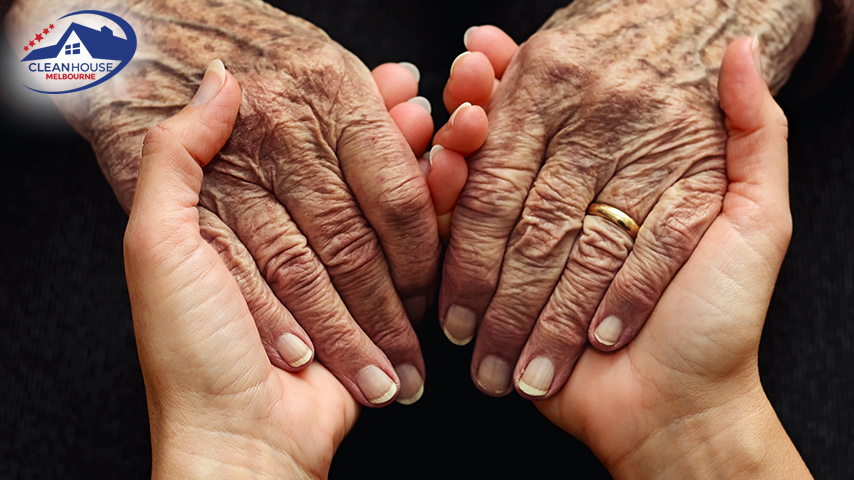
Room Maintenance in Nursing Homes
Many years back, nursing homes and aged care living facilities, which are both long-term care, often meant for older adults in need of various levels of services.The property managers usually employ the services of the professionals for their cleaning, at least, the popular areas of the facilities.
There are two main reasons for doing this. Firstly, the nursing home doesn’t necessarily have to employ more workers, which could save them a great amount of money. And they don’t need to monitor or give training to the custodians. The facility is only concerned about the cleaning crew’s quality of cleaning so it can satisfy the necessary cleaning requirements.
Professional cleaning service offers the following:

- Long-term care cleaning system: Typical cleaning systems (offered by cleaning workers) typically center on specialist cleaning, area cleaning, or other systems that assign certain cleaning duties to cleaning workers. Even though these systems may work well in a long-term care facility, they are not the types of cleaning systems we are talking about here, nor can they solve specific issues discovered in these facilities.
Rather, the following components should be included in an effective long-term cleaning system:
- Evaluate residents
- Evaluate cleaning requirements based on people who live in the facility.
There are long-term care facilities that their residents are healthy and active with minimal special cleaning needs. Others have elderly or sicker residents that need special care, not only from workers from the facility but also from the cleaning crew. For example, they may usually have accidents or may spill liquids on carpets or floors more often.
- Cleaning service’s role:Find out the responsibility of the professional cleaning service and what is not. Only popular areas will be cleaned by the BSC and not medical care or care station rooms in most cases. Also, factors like the frequency of use of the area by residents, the number of residents using the areas, the types of floor coverings used on the area, furniture, and other items that can affect cleaning needs must be considered.
- Staff Productivity:Make use of effective work-loading to make use of each cleaner’s time very efficiently. When you put an effective work loading system into practice, cleaning supervisors understand the duration it takes to complete all cleaning tasks in each facility’s location alongside the number of custodial workers needed. This doesn’t only focus on cleaning duties, but also non-cleaning jobs like obtaining equipment, stocking supplies, and collecting trash from one area to another.
- Create a schedule:Make use of residents’ needs as the basis for forming a cleaning schedule. For example, a cafeteria floor can only be mopped and cleaned before or after breakfast, lunch, or dinner time. Other popular areas can be cleaned at these meal times. Supervisors and cleaning crew have to agree on the areas to be cleaned and the time to do the cleaning as well.
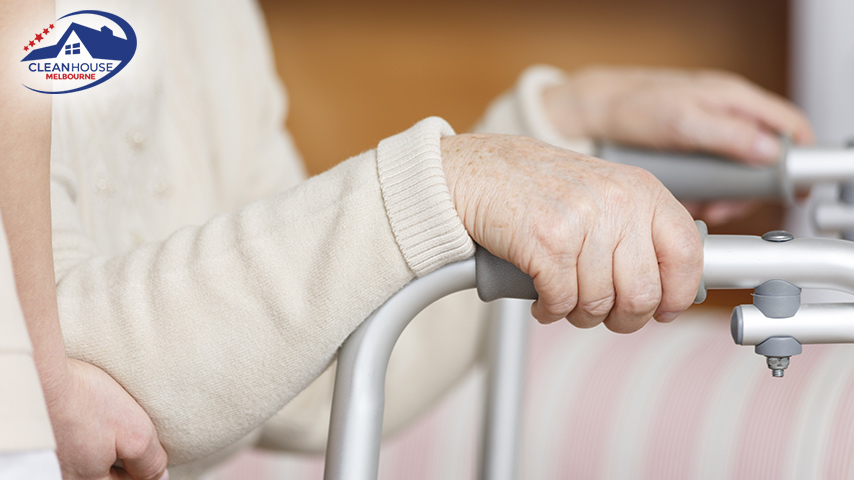
- Choosing products:A cleaning worker in a normal office setting may only carry chemicals like a multi-purpose cleaner, a window cleaner, a spotter, and furniture polish. The use of environmentally friendly chemicals mixed and applied correctly can be safe and requires little special training. However, a long-term care facility may require special cleaning chemicals and disinfectants to remove methicillin-resistant staphylococcus aureus (MRSA), vancomycin-resistant Enterococcus (VRE), and other bacteria and germs.
Thorough training of cleaning workers is required before using these chemicals. Identification of spots on the facility that has been contacted with infected residents, germs, blood pathogens, and bacteria is another major concern that must be tackled in a long-term care cleaning system. There will be a need for special precautions in these areas, with protective cleaning gears for cleaning workers.
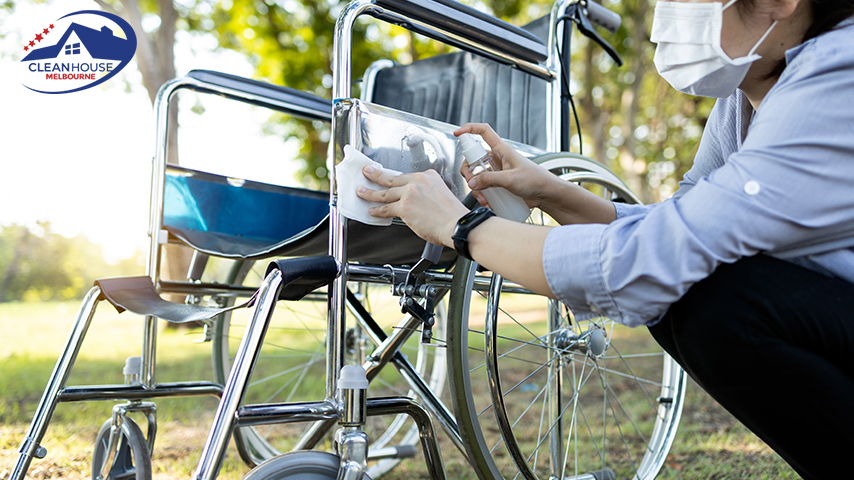
- Avoid cross-contamination:Cleaning science experts reported that mops and rags are often good at spreading as many germs as they remove. The best thing a cleaning worker of a nursing home can do for the sake of its residents’ health is to replace these used cleaning devices with the use of a no-touch cleaning system specially made for soil removal.
Instead of having bacteria spread from one room to the other in a nursing home with mops, we suggest you use spray-and-vac cleaning that makes sure the contaminated soils on the spot are removed. Another great move is to use towels specially designed to fold into different parts to avoid cross-contamination. Using regular rags gives room for several mistakes, causing disaster in a care facility or a nursing home.
- Focusing on each room: The use of the same gloves to clean separate rooms is a mistake often made by cleaning workers in the nursing home room. Custodial crews are not expected to put on the same gloves used for another job in the hall or on another cleaning job as germs can likely transfer.Make sure your cleaning crews work from the cleanest spots to the dirtiest to reduce the risk of germ and bacteria transfer. Apply the same care to the disposal of cleaning products. The risk of germ transfer increases when cleaners reuse mop water or rags in various rooms in the nursing home. Freshwater and cleaning product are introduced into the machine by Kaivac’s system to maintain proper hygiene levels.
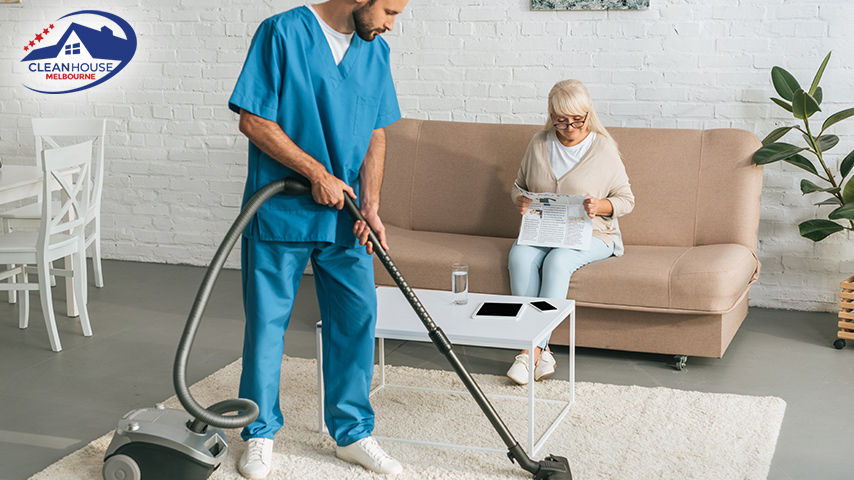
- Floor care:Frequently touched areas like light switches, beds, door handles, railings, ledges, and so on are of the most concern when trying to control infection in long-term care facilities. However, there is a need to give importance to floor care, as well. For example, in places with hard floors, safety is a vital issue. Any applied finish to floors must satisfy or pass the UL requirements for resisting slip.
Also important, the floor’s traction is affected by spills and dirt, which make the facility’s floor cleaning program more important. You can get a recommendation from an expert for a cleaning program that will be perfect in these facilities.
Regarding carpets, most nursing homes have had various experiences with carpeting, similar to most schools. In most cases, much focus is not on the facility’s best option between carpets or hard surface floors. It seems that air quality is preserved and protected when high-filtration vacuum cleaners are used together with an effective, low-moisture, hot-water extraction system, as well as the health of the surrounding area.

Cleaning Checklist Nursing Home Room for Maintenance
Double-checking your general cleaning guidelines and reset arrangements as required is always a nice idea. This nursing home cleaning checklist is specially made to create a template personalized to your facility. We divide this cleaning duties checklist for elderly care facilities into three sections with routine recommendations.
The guideline is suitable for residents’ rooms and the facility’s entire spaces, like dining rooms, common areas, and bathrooms.
SectionA: Daily Cleaning Duties in a Nursing Home
These daily guidelines provide a healthy environment across your senior care home facility. Prevent residents from being exposed to harsh chemicals with the use of mild disinfectants for general cleaning.
- Wipe down the entire surfaces in each and public areas many times a day.
- Disinfect mots-touched areas such as cabinet handles and door, handrails, shared electronics, and light switches.
- Make sure hard floors are swept and mopped, carpets vacuumed, and doormats inspected for any wear signs and tripping hazards.
- Wash dirty kitchen dishes, wipe all appliances and check fridges for spoiled items.
- Clean and disinfect whirlpools, toilets, bathroom showers, sinks, and countertops.
- Keep all dirty linens in heavy, water-resistant fabric bags, and move them to the laundry room with linen carts that are covered.
- Make sure trash bags are tied before you remove from receptacles, and watch out for any tears that might spill out contents.
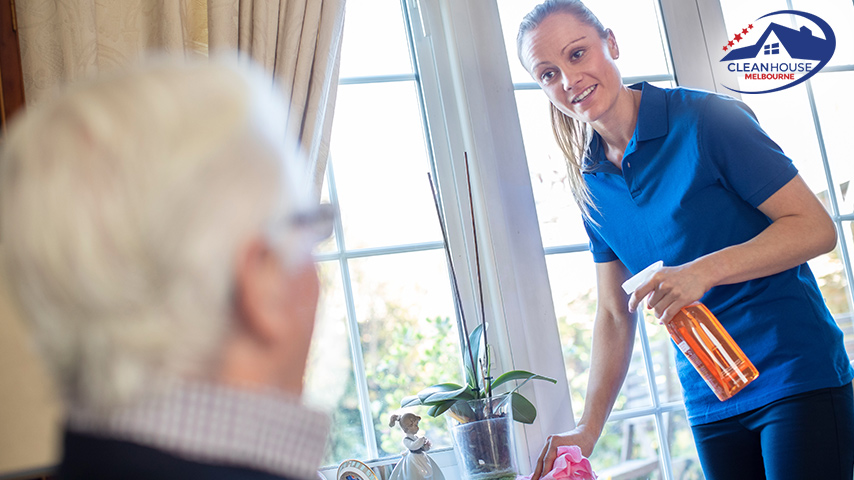
Section B: Weekly Cleaning Procedures in Nursing Home
Perform weekly cleaning duties in an aged-care facility to stay ahead of tough cleaning jobs. The following projects also allow you to confirm the situation and safe operation of windows, doors, and light fixtures.
- Wash drapes, vacuum furnishings, and cushions, and clean the window blinds.
- Dust light fixture and inspect the type of bulb and its wattage to verify safe use with each fixture.
- Clean and straighten up the cupboards, fridges, pantries, and other supplies in storage areas.
- Polish both inside and out of the window sliding glass doors, including interior windows and glass room sections.
- Clean the wood and metal doors and inspect hardware, lock mechanism, and door stops.
- Check sink and floor drain in kitchens and bathrooms for cogs or any mold and mildew growth.

Section C. Monthly Cleaning Arrangement for Nursing Homes
Partner with workers to create monthly cleaning tasks in your adult-care facility. Performing these jobs on a monthly routine will make it easier to keep up with daily and weekly cleaning duties.
- Clean internal cabinets and pantries thoroughly as well as interiors of kitchen appliance.
- Check freshness and expiration dates of food in refrigerators, pantries, and cabinets.
- Clean all ceiling fans, overhead light fixtures, as well as fire sprinkler systems, and inspect smoke alarms.
- Wipe all baseboards and surfaces in each room down, keeping an eye out for any dampness signs from unseen leaks.
- Clean wall air vents, ceiling, and grills, and change filters of the HVAC.
- Perform steam-cleaning on carpet and area rugs, as well as waxing and buffing of hardwood floors.
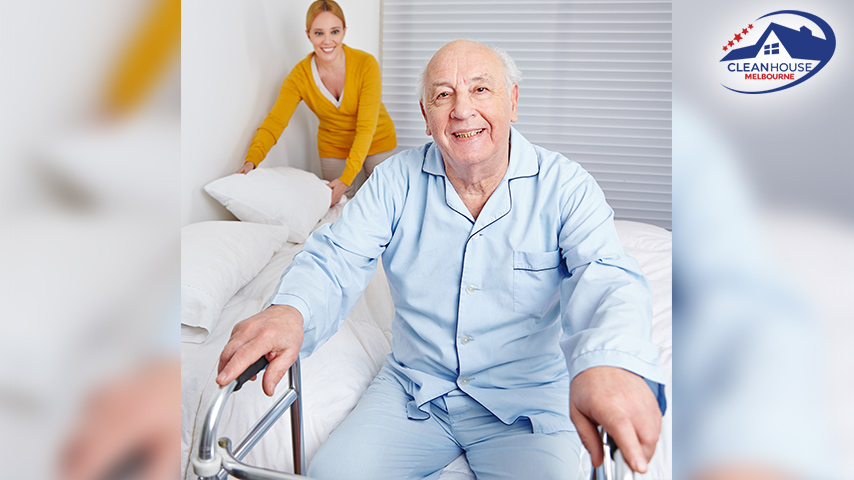
Importance of Professional Cleaning Service for Maintenance of Nursing Home Room
Outsourcing large cleaning projects is usually more efficient. Hiring a cleaning company saves you the cost of renting cleaning equipment and purchasing specialty products. Heavy jobs will also be left safely to professional cleaning service.
Below are just some of the advantages of hiring an experienced cleaner for nursing home room maintenance:
- They perform professionally cleaning of furniture that keeps the home’s interior fresh and elongates the life of fabrics and frames.
- Deep cleaning and stain protection treatment are included in carpet and rug care and are specific to padding and fiber types.
- Thorough grout disinfecting is included in tile counter, floor, and surface cleaning.
- They professionally clean air duct systems to help maintain healthy air quality across your facility.
- They also offer green cleaning, the one-time project as well as customized scheduling options.
- For fire or water damage, you can count on a full-service cleaning company for restoration jobs.
FAQs about Nursing Home Room Maintenance:
- What is nursing home room maintenance?
It involves regular cleaning and sanitisation of resident rooms and common areas to ensure hygiene and safety. - Why is professional cleaning important for nursing homes?
Professional services ensure thorough disinfection, minimising infection risks and meeting regulatory standards. - What areas are prioritised in nursing home cleaning?
High-touch areas like door handles, light switches, and medical equipment are prioritised to prevent contamination. - How often should nursing home rooms be cleaned?
Daily cleaning is essential, with deep cleaning scheduled weekly or monthly. - What products are recommended for nursing home cleaning?
Use non-toxic, eco-friendly disinfectants to avoid harming residents and maintain a safe environment. - How does professional cleaning reduce cross-contamination?
Using specialised equipment and single-use products minimises the spread of germs between rooms. - Are customised cleaning plans available for aged care facilities?
Yes, services can tailor cleaning schedules based on the needs and health conditions of residents. - Why should nursing homes avoid harsh chemicals?
Harsh chemicals can irritate residents, particularly those with respiratory issues. - What training do professional nursing home cleaners receive?
Cleaners are trained in infection control, use of equipment, and handling of medical waste safely. - How can a nursing home ensure its cleaners follow protocols?
Regular audits and supervision ensure that cleaning standards and protocols are consistently met.
Need Nursing Home Cleaning Services in Melbourne? We Are Here For You
Each aged-care living facility has different cleaning needs. As you update and reschedule staff works, we hope these guidelines can further simplify your job. We offer full-service and certified cleaning services to nursing homes. You can count on Clean House Melbourne to enhance your worker’s hard work. We are here to handle your emergencies as well. Contact us at 0407 094 444 to obtain a quick estimate.


 Email Us
Email Us Whatsapp
Whatsapp


